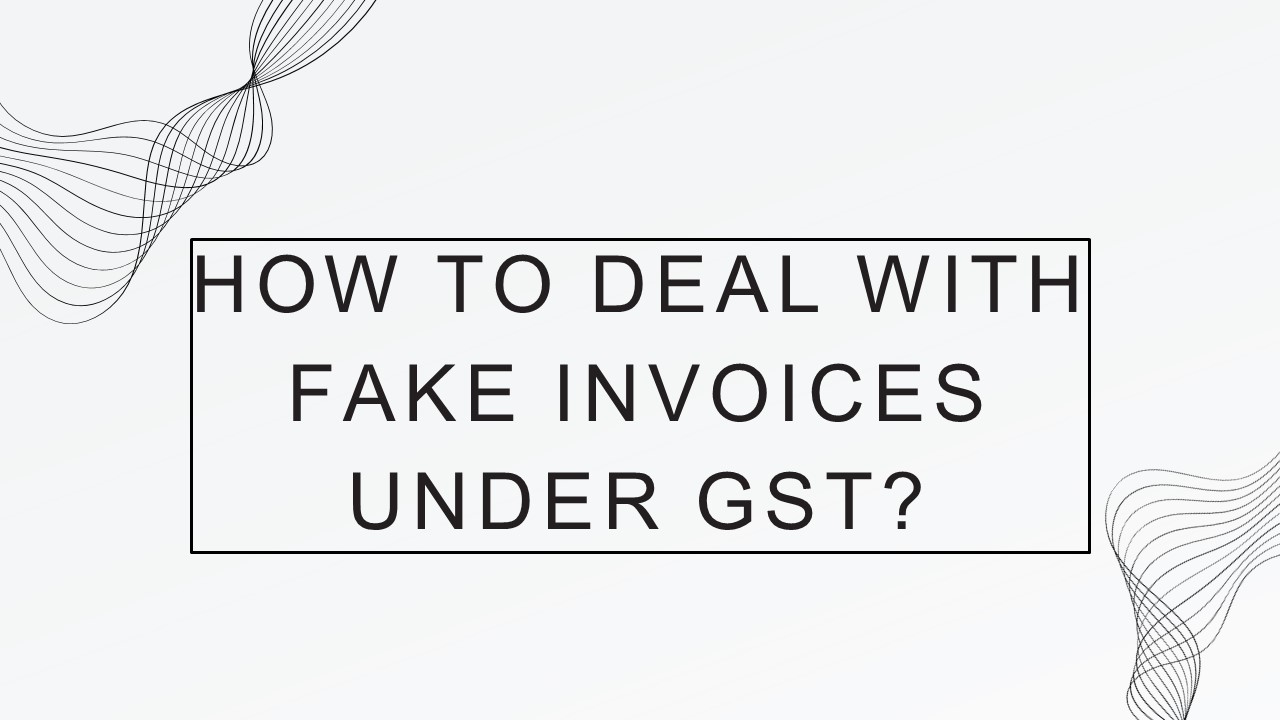How to deal with Fake Invoices under GST? - PowerPoint PPT Presentation
Title:
How to deal with Fake Invoices under GST?
Description:
Fake Invoices under GST: Here, in this article, we will discuss how to deal with fake invoices and what actions to take after a fake invoice has been identified. – PowerPoint PPT presentation
Number of Views:18
Title: How to deal with Fake Invoices under GST?
1
HOW TO DEAL WITH FAKE INVOICES UNDER GST?
2
The introduction of the GST in India in July 2017
aimed to simplify the tax system and reduce the
compliance burden for businesses. While GST has
been successful in achieving these goals, it has
also brought about challenges, including
instances of fraudulent activities involving fake
invoices. Fraudsters have been creating and using
fake invoices to fraudulently claim Input Tax
Credit (ITC) under the GST system. Here, in this
article, we will discuss how to deal with fake
invoices and what actions to take after a fake
invoice has been identified.
3
WHAT IS A GST INVOICE?
A fake invoice under GST refers to a deceptive
document that is created to falsely represent a
transaction for the purpose of evading taxes or
fraudulently claiming benefits under the GST
system. It is a fraudulent practice where
individuals or businesses generate invoices for
goods or services that were never actually
supplied or received.
UNDERSTANDING FAKE INVOICES AND THEIR IMPACT
Fake invoices are deceptive documents created by
fraudsters to falsely claim purchases of goods or
services they never actually made. These invoices
enable fraudsters to fraudulently claim ITC,
resulting in financial losses for the government
and an unfair advantage for the perpetrators.
Fake invoices pose a threat to the integrity and
effectiveness of the GST system, requiring
businesses to adopt strategies to combat this
fraudulent practice.
4
TAKING PRECAUTIONARY MEASURES TO DEAL WITH FAKE
INVOICES UNDER GST
To effectively tackle these frauds, it is
important to establish a system that can identify
suspicious entities at an early stage and
promptly detect GST frauds. This is especially
crucial because many of these fraudsters tend to
operate by impersonating dummy individuals who
lack real assets, making it extremely difficult
to recover any money from them if the fraud is
discovered later on. To address this, the
following safeguards are recommended as key
elements of risk profiling to prevent such GST
frauds
1) Scrutinizing and verifying registered
taxpayers through risk profiling to identify
fraudsters involved in fake invoices at an early
stage. Verify GSTIN via IRIS Peridot App and
confirm the authenticity of the taxpayer. 2)
Focusing on sectors that have historically been
prone to tax evasion. 3) Maintaining a database
of offenders involved in fraud to prevent them
from re-entering the system.
5
- 4) Considering certain risk indicators associated
with these individuals or their activities, such
as - Having multiple registrations under the same PAN
(Permanent Account Number). - Sharing common email addresses, mobile numbers,
addresses, authorized signatories, or promoters. - Allowing individuals whose registration
application was rejected or whose registration
was canceled to reapply. - Noting live registrations under the same PAN
within the CGST jurisdiction where an offense has
been reported by the SGST authorities. - By implementing these measures and conducting
comprehensive risk profiling, authorities can
enhance their ability to detect and prevent GST
frauds, ensuring a more robust and trustworthy
tax system.
6
IDENTIFYING FAKE INVOICES UNDER GST AND HOW TO
DEAL WITH THEM
- The standard operating procedure for detecting
and tackling fake invoice fraud in GST involves
several steps. Here is a simplified explanation
of the process - 1. Identification
- The first step is to identify entities involved
in generating fake invoices. Risk parameters are
used to identify these entities, such as - Multiple GSTIN registrations for one address or
PAN. - Incomplete or incorrect addresses used for GSTIN.
- Taxpayers dealing with sensitive commodities.
- Common email addresses, mobile numbers,
addresses, authorized signatories, or promoters
for multiple GSTINs. - Mismatch between declared premises and volume of
goods transacted. - Mismatch between transaction details in GST
returns and e-way bills generated. - PAN involved in any fake invoice or other GST
frauds appearing in GSTR1A or GSTR 2A. - Abnormal utilization of Input Tax Credit (ITC),
such as above 95
7
- 2. Investigation
- The aim of the investigation is to establish that
there was an actual supply of goods or services
by the supplier who issued the fake invoices
under GST. This involves steps such as - Conducting searches of declared premises to prove
the lack of or inadequate manufacturing
facilities. - Checking indicators like electricity and water
consumption that dont match the declared
quantity of goods manufactured. - Lack of facilities and space to handle the traded
goods. - Suppliers of invoices have no premises for
dealing with the goods. - Non-existence of required inputs, input services,
or valid clearances/licenses/permissions. - Lack of necessary agreements between entities.
- Absence of e-way bills.
- Fake vehicle numbers shown in e-way bills or
invoices. - Comparing details provided to other agencies like
Income Tax and Registrar of Companies. - Cross-referencing vehicle details with records
from the Regional Transport Office (RTO).
8
THANK'S FOR WATCHING
Read This Full Article At Fake invoices under GST































